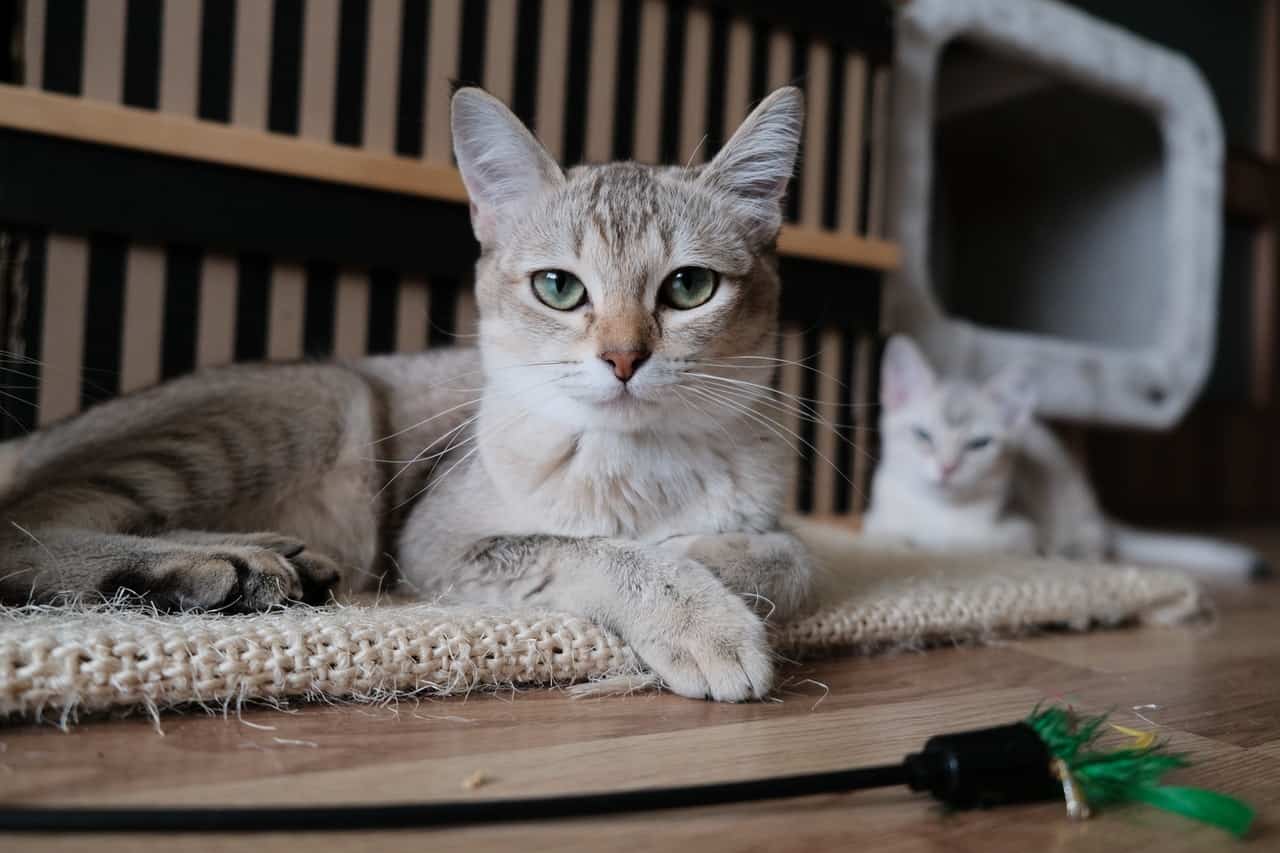As our cats’ caregivers, we need to know the signs of illness in order to keep them safe. And just like it is for humans, water is essential to a cat’s health and well-being. When your cat’s fluid levels drop below normal, they can quickly become dehydrated. This can happen for two main reasons: either your cat is not drinking enough water, or they are experiencing a sudden increase in fluid loss. Do you know the signs of dehydration in cats? Just keep reading to learn what they are so you know how to spot them.
First off, how do cats become dehydrated?
Just as humans can become dehydrated, your cat can become dehydrated, too. The difference is your cat doesn’t have the ability to tell you exactly what’s going on with them. For cats, water accounts for 80 percent of their bodies. So, it’s vital for their organ function. And should they become dehydrated, it’s something that needs to be remedied quickly.
A cat that is trapped out in the elements can easily become dehydrated, but an indoor cat can just as easily become dehydrated as well. Cats that are experiencing vomiting or diarrhea can become dehydrated due to the lack of fluids in their body, which can regulate back to normal once their illness subsides.
Signs of dehydration in cats
Here’s what to watch for when it comes to knowing the basic signs of dehydration in cats:
- Lethargy
- Sunken eyes
- Loss of appetite
- Decreased skin elasticity
- Elevated heart rate
- Dry mouth
- Panting
If you feel as though your cat is seriously experiencing any or all of the symptoms I’ve listed above, it’s best to take them in to see their veterinarian immediately so that they can get checked out. Dehydration can also coincide with hyperthyroidism and kidney disease, so it’s important for your cat’s safety not to overlook the possibility of dehydration should they be displaying signs of it.
How to help prevent dehydration in cats
Typically speaking, cats need between 3.5 to 4.5 ounces of water per 5 pounds of body weight per day. If you have a 10-pound cat, they should be consuming between 7 to 9 ounces of water or about half an average bottle of water. The keyword here is “consume”—so this can be done via food or ordinary water.
Dry cat food contains considerably less water, so cats that only consume dry cat food regularly would be more at risk. For example, the average can of wet cat food is roughly 70 to 80 percent water, whereas dry food is only around 10 percent. It’s important that your cat consumes adequate fluids each day to prevent dehydration and maintain regular body function.
Consuming water doesn’t always have to be strictly in liquid H2O form, so those cans can add up—plus most cats go crazy for them. Additionally, canned food contains fewer carbohydrates in comparison to dry food. Therefore, it’s been reported that cats fed strictly dry food are much more likely to develop feline obesity, as well as diabetes.
Veterinary Practice News tells us,
“Cats eating dry food don’t drink enough water, and this increases the risk of chronic kidney disease (CKD) and lower urinary tract diseases, such as feline interstitial cystitis (FIC) and urolithiasis. Feeding canned foods maintains better hydration and promotes dilute urine, reducing the risk of these diseases.4,6,7″
Most cats are good about drinking water on their own, but there are ways to encourage them to get more water in their systems. Always be sure to offer them fresh water daily, or even consider purchasing a cat fountain to keep a clean and constant stream flowing. Fresh is key when it comes to your cat’s particular taste. Additionally, cats actually prefer room temperature water versus cool and crisp water that we often reach for. Because if they were in the wild, they’d consume their meals at room temperature from their fresh kill.
If you found this information particularly useful, be sure to share it with other cat owners that you know to help them out.
Want to know the signs that your cat has a fever? Learn them here on cattitudedaily.com.






